A nuclear attack or disaster will come without warning, and while it is not practical to harden your home against the shockwave and thermal blast of an atomic bomb, you can take steps to shield yourself and your family from the impending fallout.
A purpose-built fallout shelter is ideal but also prohibitively expensive and outside the reach of most of us. The good news is that we can take steps to secure our homes against fallout without digging a bunker in our backyard.
What Is Fallout?
Nuclear fallout is caused by the vaporized debris mixing with the radioactive particles that make up a mushroom cloud. The wind then carries this fallout downwind from the blast.
Related: A Strange Thing That Might Save Your Life in A Nuclear Aftermath
Fortunately, most of the fallout in the immediate area will fall within twenty-four hours and look like ash or sand.
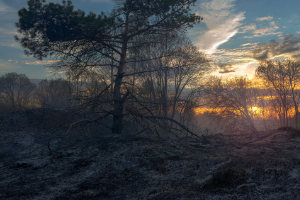
It can take months for all the fallout in the atmosphere to find its way to the ground, and the effects can be global. The problem with nuclear fallout is that its radiation comes from hundreds of radioactive nuclei with varying half-lives.
Some particles may have a half-life of a few days, and others may be decades.
This means that there is no good answer to the question of how long fallout will be dangerous, it depends on multiple factors. Since radiation has no taste or smell, only specialized equipment can detect how dangerous it is.
What To Do Immediately Following A Nuclear Detonation
It is unlikely that you will have any notice before an attack. Provided you survived the initial blast, you must seek shelter immediately.
If you are at home, you can execute your plan to set up refuge inside your home. If you are out and about, you’ll have about fifteen minutes to find shelter and avoid exposure to the fallout.
Immediately after entering the building that you will shelter in, close all the doors and windows and shut down any ventilation to prevent fallout particles from entering the building.
Close chimney dampers, seal bathroom exhaust fans and range hoods and close all furnace vents. Choose a room that is furthest away from the roof and the exterior walls, with the best option being to shelter in the basement.
Wherever you find shelter, it is essential to remain in place for at least 72 hours and to monitor the local radio stations waiting for the all-clear to be called.
Shielding Your Home
The best way to protect yourself from fallout is to construct a fallout shelter in your home that you can take refuge in after a nuclear strike.
⇒ How To Build An Underground Bunker For Only $400
Ideally, you’ll want to be inside a building made from concrete, but since most of our homes are constructed from wood, the next best thing is to modify a room within your home to act as a fallout shelter.
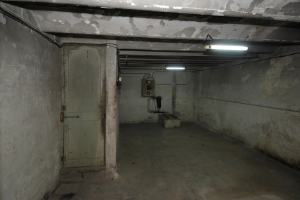
The best location is away from exterior walls and preferably underground.
A room in the basement near the center of your home will probably be the best location, with the next best thing being a room on the ground floor that is separated from the exterior walls of the house.
The first step is to reinforce the walls with thick heavy materials, which will block the radiation that the fallout brings.
Brick, sandbags, and cinderblocks are all excellent options, but you will need to account for the weight of these materials as you plan your shelter, especially if it is not in the basement.
Your fallout shelter should have enough food, water and supplies for a minimum of one week for yourself and your family.
Also, include entertainment options to pass the time while you wait for it to be safe enough outside to venture out of your home.
It is imperative that you have a battery-operated radio so that you can keep in touch with what is happening in the area and get word on when it is safe to exit your home.
Because of the EMP that a nuclear weapon generates, you need to secure any electronics you want to use in a Faraday cage to protect them.
⇒ Learn How An EMP Will Affect Your State
Decontamination
One of the often-overlooked considerations is establishing a decontamination area for those who come into the building from outdoors. You’ll need to create a space sealed from the rest of the home where a person can remove all their contaminated clothing.
You must provide a sealed container to store the contaminated clothing items so that you can safely isolate them from the rest of the people sheltering in the house.
You will then need another space to wash all the fallout on the skin and in the hair. Finally, there should be a clean space where they can dress in new clothes and enter the building.
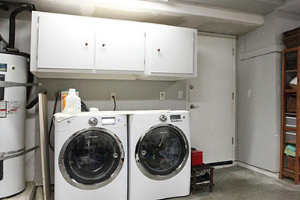
Areas in a home such as garages, mud rooms, or laundry rooms are good options for decontamination areas.
Heavy plastic sheeting such as vapor barrier would be an excellent choice to keep any fallout particles contained, but plastic painter’s drop cloths are also a good option.
After the area is used to decontaminate, the plastic can be taken down carefully, so the fallout is contained and then disposed of in large garbage bags. Make sure to mark the bags and store them as far as possible from your shelter area.
Building A Fallout Kit
In addition to food and water, you’ll need to stock some essential supplies to guard against the effects of radioactive fallout.
The first is to have a kit standing by to construct your decontamination area. Items to include would be: plastic sheeting, duct tape or tuck tape, contractor-sized garbage bags, five-gallon pails, coveralls. large wet wipes. soap, towels, and wash basins, exhaust fan.
Personal protective gear is also critical and should consist of:
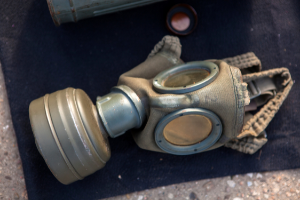 Disposable coveralls or a Hazmat suit rated for exposure to radiation
Disposable coveralls or a Hazmat suit rated for exposure to radiation- Full-face respirators or gas masks rated for radiation
- Respirator canisters rated for radiation
- Potassium iodine tablets
- Radiation detectors
You will also need to consider having an extensive first aid/trauma kit on hand because of the injuries that a nuclear attack will bring. It would help if you also educated yourself on the signs and symptoms of radiation poisoning and treatment options.
Being in the vicinity of a nuclear blast or accident can seem like a situation that is without hope, but the truth is that if you are alive after the explosion, there is a good possibility that you can stay safe and healthy as long as you shelter immediately when a nuclear weapon detonates, or there is a nuclear accident.

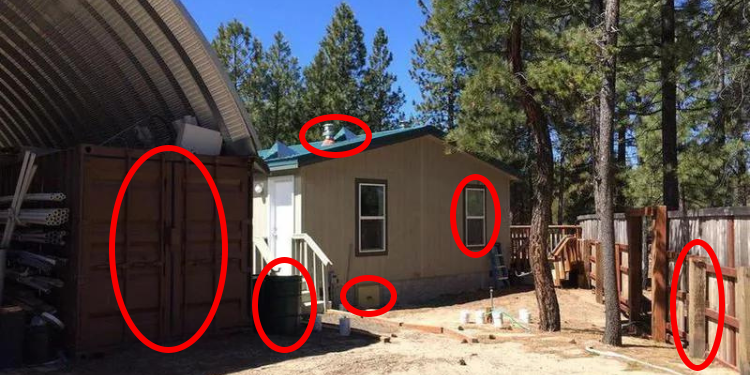













Sounds like a plan. This is minimal, but pretty good. Our fallout shelter is mines going as deep as 500 feet. Because the mining company hoped to come back, all steel girders and cages are intact, and I was told the diesel generators are kept in shape and the fuel removed and replaced by the company on a regular basis. And, most such companies are retrofitting mines. niio
Dr. Strangelove… the “mine shaft gap”
Gentlemen, you can’t fight in here, this is the War Room!
“We’ll meet again, don’t know where, don’t know when, but we’ll meet again some sunny day”
Guess I’m gonna die then. There are no basements where I live. Building a concrete safe room in a 320 sq ft cabin ain’t gonna happen. Bye bye.
Same here in SW Australia, no sirens either, am too old to start doing calisthenics to kiss my arse goodbye
We are less likely to get hit than you in the States, but it still can happen, so we will just do the covid thing and isolate with the supplies on hand
It is ridiculous that the so called ruling class push for conflict and wars even to the point of nuclear as they sit safely in their hundred million dollar bunkers, all I can hope for if it happens the detonations will seal them in their bunkers so they can’t get out and start looking for survivors to serve them again.
Similar SW Australia…. Except I am in an apartment building. I’ve kitted out my lift foyer (that I share with one other unit) with enough of these basics (good to get confirmation from this article of my plans!) for us and the neighbours… and should the big boom strike we could live crowded but safe in there for a week or three. It’d be unpleasant, but doable. Particularly if no one is asinine in the fire stairs and we can expand out to that space to too provide toilets and personal space (I’m top of the stairs, so control access at the top, but there’s obviously access below). This is the ‘strongest’ part of our structure. I have tape to seal shut the elevator doors and stop air flow from the lift well….
But it’s not us pushing the button, it’s people who really haven’t got a clue who would start the mess :/
I really do not like to see the use of absolute terms, such as ‘proof” with these kinds of articles, I will say that this is one of the best sheltering in place against fallout articles in a long time.
Well done.
Just my opinion.
What hope do elderly Americans have when they live in ordinary wood frame homes ??!
I might question the data here. Years after the blast in 1971, I visited Nagasaki. (It was a booming metropolis, covering an area, probably larger than Los Angeles, with as many or more high rise buildings.). The museum in Nagasaki, suggested that those in a radius close to where the above surface blast, didn’t make it … but people living merely 5 miles (few basements and simple wood framed homes) survived. Radiation poisoning, due to eating and drinking contaminated foods, and water … didn’t give them longevity. But they survived. If you are 15 miles from the immediate blast, and stay indoors for a week … to allow the majority of the radiation to settle … you will probably survive. Your actions from that point, will likely determine how long.
The bombs used in WWII were tiny compared to the monsters available in today’s arsenals. However, it is likely that smaller yield weapon in the form of multiple warheads would be the likely culprits, but even these are more powerful than the WWII versions. Oh well, I live in a manufactured home on a concrete pad, so it doesn’t much matter if the weapon is a real boomer or a little fellow…bye, bye.
I’m an elder and my husband and I live in a double wide on concrete. It hurts my heart that I won’t be able to protect our 11 furbabies. Bye, bye 🙁
Orion keep in mind that the world war 2 weapons were airburst to cause maximum damage. The tradeoff is that airburst weapons generate the smallest amount of fallout.
Surface burst is a whole different animal. While they do less damage (radius wise) than an airburst, the explosion will result in large quantities of dangerous fallout.
I think it depends on the size of the bomb? Nagasaki is a small payload compared to today’s bombs. I’ll make a second comment with the link to a site you can play with geographical location, bomb type and aerial vs ground detonation (in case it gets held up in moderation).
Nukemap
I don’t know much about safety regarding nuclear blast! But i am listening now to the best explanations and safety comments, it is way to learn much better in case….for saving lives!?????
I think it was Nagasaki where a Catholic Church survived the blast intact while all the other buildings in that area were completely destroyed. The Jesuit priests inside were praying the rosary at the time of the detonation and were all saved and left unscathed. And yet another good reason to be praying one’s rosary every day. Not only to help you save your soul, but perhaps your body, too.
Judas Priest?
I’d be curious about the construction techniques…. of the average Nagasaki house, shop and school… vs a probably double wall stone and brick built Catholic Church?
It’s Japan…all of their buildings are made of rice-paper 🙂
Yes it seems they were mostly raised off the ground, wooden and tile constructions…. Very easy for a nuke to flatten it sounds.
The church was built from brick, and almost destroyed losing walls etc. The primary remains were a bunch of sant’s statues. It was rebuilt in 1959.
sorry i don’t pray to a pagan false gods
This for DAVID,
Rice paper and bamboo! Even during war2 wood was at a premium and cost a family much. Tamped dirt floors with self made tiles fired in a bamboo kiln with much care and design. I studied Japan because I have a “Family” sword and got curious. This sword was taken by my Father on Saipan during the invasion he was a part of. First wave and got sideways on the beach, LSM 203 had a hard time of it. My Dad got many “I was there” medals except for a bronze star and a Purple Heart with two clusters (proof he forgot to duck). Carried a scar on his left cheek all the way to his dying day. Was a Radioman 1st and a darn good 20mm gunner from 1942 to 1947 when they were still rooting our holdouts that refused to believe that Hirohito surrendered their whole Nation. I got that from his shipmates, not from Him because he would never talk about it. I went to several reunions to honor his name when the roll was called. I learned to be a signalman from him, both flags, semaphore, and radio. I held the D.O.D. callsign NNN0GAA THREE for 23years, then AFA4QA for 4years until I retired. Great way to serve your Country!
“How To Make Your Home Fallout Proof”???
you probably can’t unless you intend to build/rebuild your shelter so it is 100% self-contained like a submarine or space station. Otherwise, there will be gaps somewhere, most likely from your incoming air and/or water supply. Then you really should consider what happens when you open the door/hatch? Exposure to whatever is outside your “shelter” is what happens.
You filter incoming air thru cotton wool and furnace filters stacked by threes, a layer of cotton wool, then a furnace filter, then more cotton wool on and on until you have at least three layers (or more if you are closer to a suspected ground burst) hand cranked unless you have a battery supply that didn’t get cooked by the EMP. If you hand crank, for five persons it would be 6 minutes out of every hour with a 3″outlet that can be closed off either manually or by gravity. This should last for about a week depending on how many people are in your shelter. This came from an old Civil Defense handout for those who had built a home shelter.
My question is how will we know immediately there’s been a nuclear blast downwind of us? You don’t necessarily hear the blast to be affected by the fallout. We can’t count of the media to tell us. Maybe social media people will find out? Where does that leave us Luddites? My biggest fear is going on about my day, lah lah lah ladee dah, not knowing that I’m getting killed by fallout.
If you’re lucky enough not to be blinded by the flash, but you’re close enough to worry about fallout there will be plenty of signs that something REALLY bad just happened. The shockwave will travel through the ground and will feel like an earthquake. if you’re within 5 miles of ground zero you’ve probably already figured out that something is wrong because you suddenly have 3rd degree burns over your entire body and everything around you is on fire (assuming a 750kt+ air burst). If you’re within 10 miles of that detonation all the windows of your building will shatter. The fantastic news is that air bursts cause very little nuclear fallout compared to ground bursts, and air bursts are favored because they do much more damage. This is a great site to check out…
Nukemap
It’s something I’ve been pondering too.
I assume the internet and power will go down. Traffic will be chaos. But I might not know it was the Big Bang, and might assume it was a cyber attack, or an EMP.
I live in a part of the world where a serious life impacting natural disaster is highly unlikely (but if I am at the farm it’s all bets off for anything except tsunami 😛 )…. So I wouldn’t have that in mind if in the city house.
I live close enough to what would probably be my states two main nuke targets to see the flash and hear the boom (and close enough to one of them to probably be very fast toast), so I am relying on that.
If it’s the other scenarios – an internet attack – I am already prepared and will quietly bunk out to the farm if it goes on more than a day or so (people have shown to be problematic if they can’t swipe their cards and buy stuff over a few days – as per other nation wide bank outages), and if it’s an EMP my plan is to bunk in until the roads are clear and the proverbial dust settles and then if possible bunk out – but day 1 is not the day to try to fight my way along gridlocked streets. So… I still have all my windows and everything is dead to air? I’ll seal up for the nuke and wait it out. If something is still working (phone, landline, mobile, internet, power grid, train lines, nearby places with generators, traffic lights, freeway lighting etc) I’ll assume it’s an internet outage.
Years ago I was in the Civil Defense, and after the cold war with Russia , the US destroyed the SHELTERS FOOD STORAGE that was for nuclear war. Signs were trashed RADIOLOGICAL MONITORING EQUIPMENT DESTROYED.
NO ONE in the Local Houston Unit would listen when I said they would regret their mistakes. NOT TO DESTROY EVERYTHING because IT would happen in the future. THEY let their guard down and still do
Because none of it would matter
nope, it won’t matter to an ignorant “Charlie Foxtrot” X-spurt, you’ll be dead along with everyone else who is stupid enough to depend on you.
radiation runs by inverse square laws. the radiation halves each day, so if you had 500 REM per hour on THE DAY then you might have 250 REM per hour on the second day, then 125 REM per hour on the third day, but it might be safe enough with ppc to go out in two weeks after the local blast depending on wind direction. Remember, you would have to consider all the weapons used upwind on that day. Radiation counters are much smaller today and measure in Sieverts which, I believe are 10 REM for every Sievert (somebody correct me if I am wrong). we have a background radiation as .003 REM per day now due to 100’s of nuclear tests and 5 nuclear reactor meltdowns, about equal to two or three X-Ray pictures per day.
No mention of activated charcoal or pectin in the emergency preps, apple juice was given to the children of Chernobyl with good success of ridding radiation through urine.
One thing that works to block ALL ionized radiation except the Gamma Wave (speed of light) burst from the explosion…water.
Get creative with that.
If you buy enough one gallon bottles that stack, line the outside walls with a double row (two rows required to stop all radiation from leaking into the house at ground level).
Do the science, 4 foot high rows of bottles at ground level will block the radiation. Stay below the top of the water (crawl around), no ground level radiation exposure.
Problem is it will take thousands of bottles depending on what you want to protect.
Good news is as the radiation fades, the water is a VIP source for your future life support.
My house has a metal roof, new double pane windows and hardy plank siding. (The siding that is made of concrete and wood) The doors are metal also.
There is a 3 foot clearance under the house …
How would I close off the vents under the house, and are the other mentioned materials enough to help keep out any damaging radiation?
I have NO rooms that do not have an outer wall, although I do have an upstairs, so the downstairs would be the place to be I think.
I think I’m going to be far enough away from any targets..no large cities (the closest is about 2 hours drive), no military bases close by, or power plants that are nuclear.
Any ideas on what to do in my situation?
There are 4 places within 600m of where I live that have basements.
That’s where we’re heading for within 30 minutes of the boom.
With two weeks supplies for us and the GSD. Yes, a DOG.
Plus water and as much as we can move in that 30 minutes.
I would like to say we are organized and ready, but we’re not.
If things deteriorate some more, I will start preparing in earnest.
My plan is simple enough. Stay in the basement for 14 days
What I can’t do is pre-harden them. I just can’t take the chance that someone will see. It’s going to foul, hard, and possibly fruitless, but something is better than nothing right.
Very interesting reads but my question would be how to get enough oxygen or non contaminated air to breathe while in a small fall out room or shelter especially for one or two weeks?